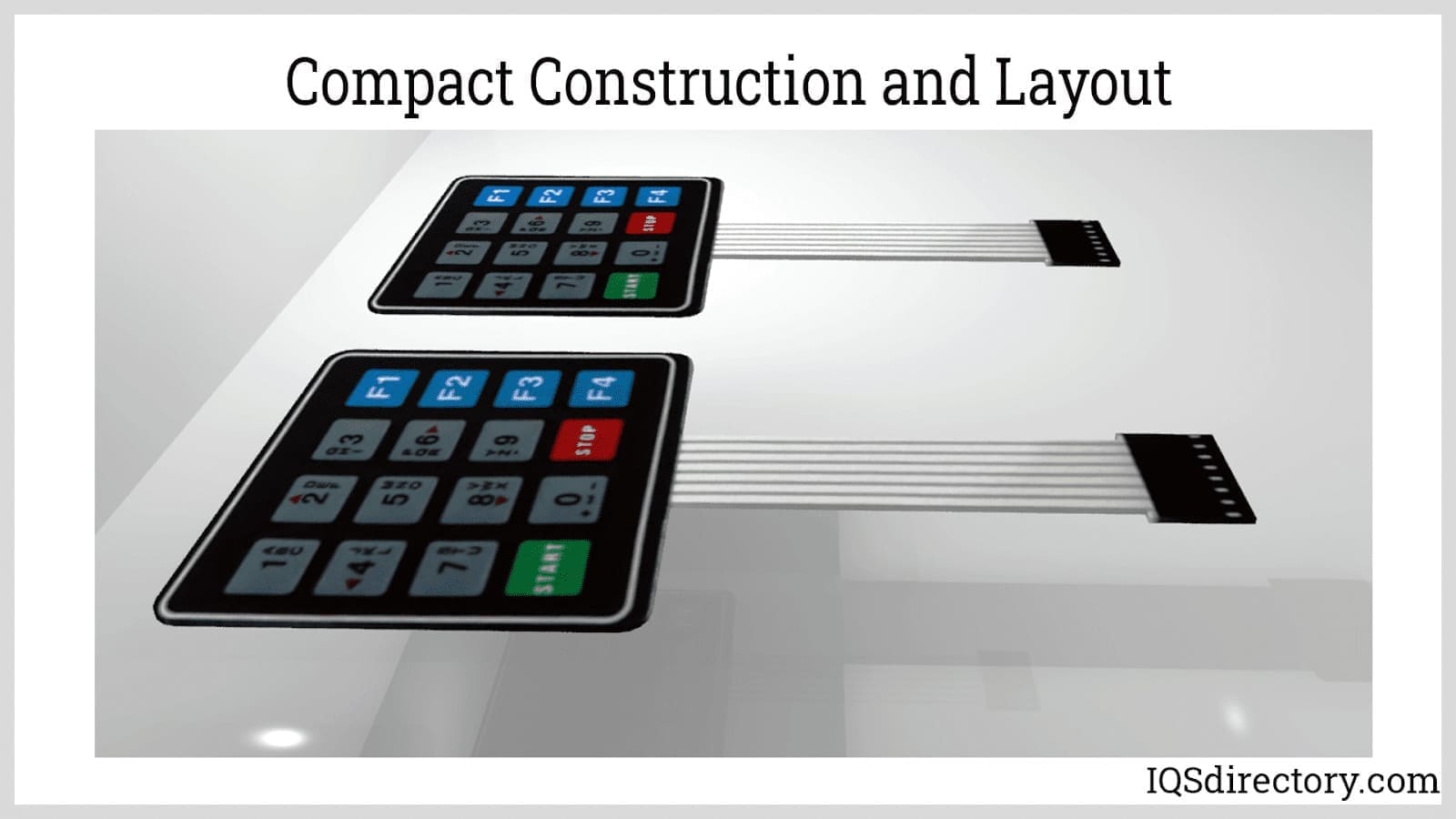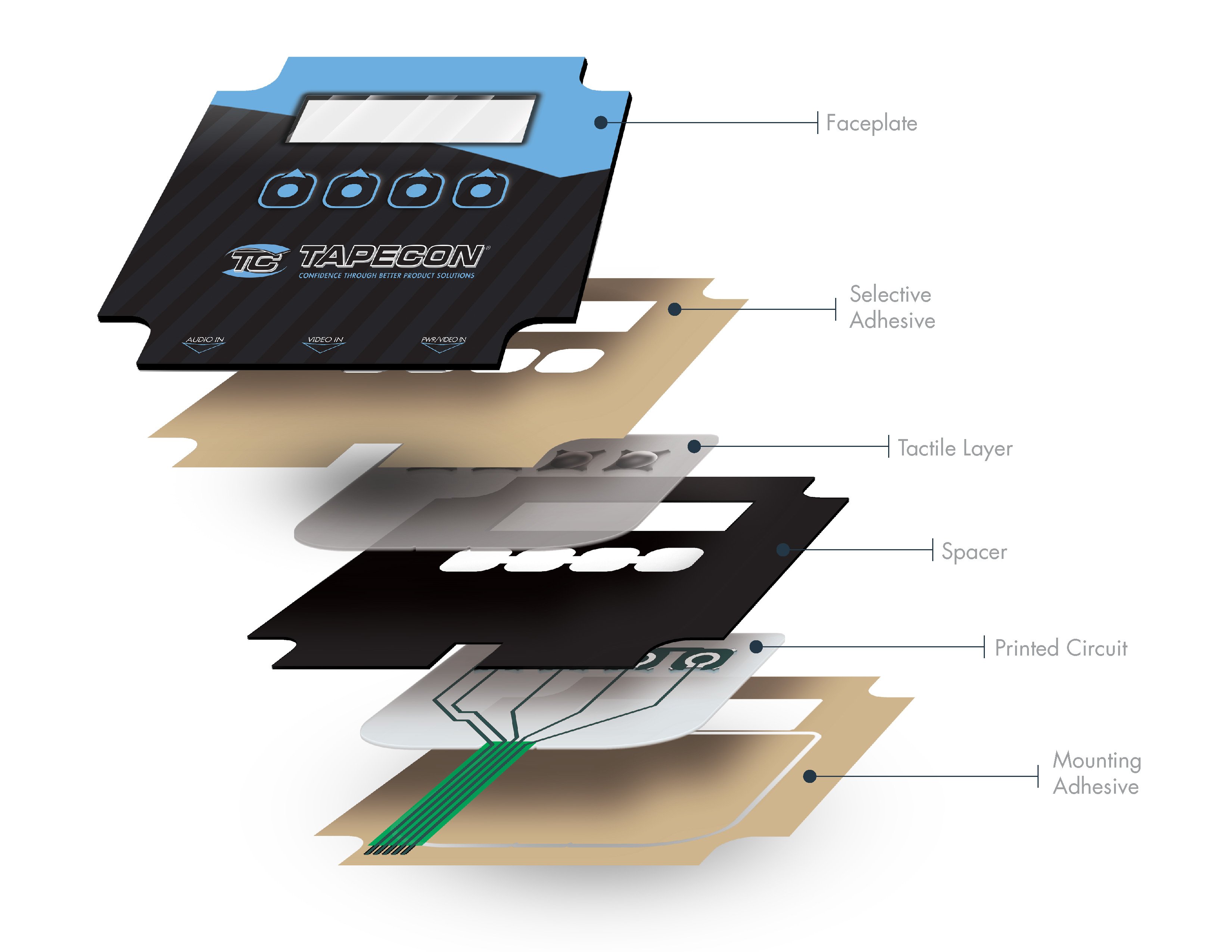Recognizing the Relevance of Membrane Switches in Interface
Membrane switches are integral elements in the style of effective individual interfaces, promoting not only functionality but additionally improving aesthetic charm and individual interaction. Their unique functions, such as resistance to personalized designs and ecological aspects, make them suitable for a diverse range of applications across numerous industries. As we explore the future fads and various benefits related to Membrane innovation, it comes to be clear that these buttons are greater than just parts; they stand for a convergence of advancement and functionality. The effects of this technology on customer experience deserve examining better.
What Are Membrane Buttons?

The spacer layer, which has sticky buildings, allows for the splitting up of the circuit layer from the overlay, ensuring that the switch continues to be in a non-activated state up until pushed. When stress is related to the overlay, it presses the spacer layer, connecting the gap and finishing the circuit in the underlying layer. This design not only decreases the physical room required for traditional mechanical switches yet also boosts the toughness of the tool, as Membrane buttons are normally immune to dust, wetness, and various other environmental variables.
Typically found in applications ranging from consumer electronic devices to clinical gadgets, Membrane switches are indispensable to modern technology, offering a efficient and straightforward user interface that aligns with contemporary design demands.
Advantages of Membrane Buttons
While numerous switch innovations exist, Membrane Switches offer distinctive advantages that make them especially preferable in various applications. Among the key benefits of Membrane buttons is their compact layout, which enables space-saving executions in devices where genuine estate is limited. Their thin account not only improves aesthetic charm however likewise facilitates light-weight building and construction.
Another significant advantage is their resistance to environmental factors. Membrane buttons are typically secured versus moisture, dust, and pollutants, making them excellent for usage sought after settings, such as medical gadgets and industrial equipment. This sturdiness prolongs the life-span of the switch, decreasing maintenance costs and enhancing dependability.
In addition, Membrane buttons can be personalized to fulfill specific style needs, including unique graphics and shades that improve individual interaction. Their tactile responses options can also be customized to supply an enjoyable customer experience. Furthermore, Membrane switches are economical, particularly in high-volume applications, as they can be created effectively.
Applications in Various Industries

In the customer electronic devices market, Membrane buttons are common in gadgets such as microwaves, cleaning devices, and remotes. Their responsive comments and visual alternatives improve customer experience while giving a streamlined, modern-day appearance. Furthermore, vehicle manufacturers use Membrane buttons in control panel controls and infomercial systems, where area is restricted, and user involvement is essential.
Moreover, the commercial field leverages Membrane buttons in control panels for machinery and devices, permitting user-friendly procedure in usually severe settings. Their resistance to chemicals and wetness makes sure durability and integrity in these applications. Overall, the flexibility of Membrane Switches contributes substantially to their prevalent usage, making them crucial in different technological domain names.
Layout Considerations for Membrane Switches

When designing Membrane buttons, several vital considerations have to be thought about to guarantee ideal performance and user experience. To start with, the choice of materials is essential; choosing long lasting, high-grade substratums can boost the button's durability and resistance to ecological variables such as moisture and temperature level fluctuations.
Second additional info of all, the design of the visuals overlay need to focus on quality and ease of use. Symbols and text have to be clear, and the design should help with instinctive communication (membrane switches). Furthermore, responsive responses is vital; including a responsive dome or various other mechanisms can improve the individual experience by supplying physical confirmation of activation
Another essential variable is the switch's electrical performance. Designers should make sure that the conductive traces are effectively developed to lessen resistance and stay clear of signal disturbance. This entails assessing the required actuation pressure and guaranteeing compatibility with the electronic components they will certainly user interface with.

Future Patterns in Membrane Modern Technology
As technology proceeds to development, Membrane switches are positioned to evolve dramatically, driven by innovations in products and producing methods. One arising fad is the unification of advanced products, such as conductive inks and flexible substrates, which enhance toughness and decrease the total weight of Membrane buttons. These products not just enhance the responsive action but also permit for the design of buttons that can stand up to harsher ecological problems.
Moreover, the combination of touch-sensitive technologies is transforming traditional Membrane Switches into more interactive user interfaces. Capacitive touch sensing units installed within Membrane switch panels can provide a more user-friendly and receptive individual experience, aligning with the growing need for smooth, modern designs in consumer electronics.
In addition, developments in printing techniques, such as digital and 3D printing, allow fast prototyping and customization of Membrane buttons. This adaptability allows producers to respond faster to market demands and customer choices.
Last but not least, sustainability is ending up being a significant focus, with suppliers discovering environmentally friendly products and processes. As these trends unfold, the future of Membrane innovation assures enhanced capability, aesthetic allure, and environmental duty, strengthening their role visit this site in advanced interface throughout numerous hop over to these guys industries.
Verdict
In final thought, Membrane Switches stand for a crucial element in the layout of customer interfaces, incorporating performance with aesthetic versatility. As improvements in technology proceed, the advancement of Membrane buttons is expected to more fine-tune user interfaces, driving technology and enhancing usability in an increasingly complex technical landscape.
Membrane switches are important parts in the style of efficient individual interfaces, helping with not only functionality however additionally enhancing aesthetic charm and customer interaction.Membrane Switches serve as a vital component in various individual interfaces, helping with a seamless interaction between users and electronic tools.While various button technologies exist, Membrane Switches offer distinct advantages that make them particularly preferable in numerous applications.Additionally, Membrane switches can be personalized to satisfy certain layout requirements, incorporating unique graphics and shades that boost user communication.In verdict, Membrane Switches stand for an important element in the design of individual interfaces, incorporating functionality with aesthetic adaptability.